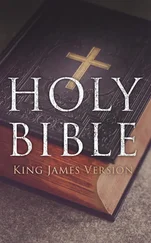Abayi said: "If a man erected an attic on top of his house and provided it with a small door four spans wide, he may carry things in all the roofs." (The reason for this statement is, that the fact of the man having made an attic and provided it with a door is proof, that the other inmates had resigned their right to the use of the roof in his favor.) Said Rabha: "It may happen, that the small door with which the attic was provided may prevent the man from using the other roofs" (even according to R. Meir). How so? If the door in the attic faced a garden below and the partition made by the attic separated his roof from the others, it might be said, that he made that door merely so as to be able to watch his garden and renounced his right to the use of the roofs. (It was taught:) Roofs, level one to the other in which, according to R. Meir, it is permitted to carry things, and a single roof which may be used according to the sages, may according to Rabh be used throughout their whole extent, while according to Samuel, it is only allowed to use them for an extent of four ells. Would not this be a contradiction by Rabh to his previous statement and by Samuel to his own former dictum? This can be explained thus: Rabh's previous statement referred to a case, where the separation between the roofs was not apparent while in this case the separation is apparent and Samuel's former dictum referred to a roof that had less than two saahs' capacity, while in this case it refers to a roof that has a capacity of more than two saah. Why should a roof of that size not be allowed to be used? The possibility of the walls reaching the tops of the roofs is not admitted, for the reason that partitions which enclose dwellings are made downwards and are not supposed to extend upwards, and of a space which is not enclosed by partitions of dwellings and has a capacity of over two saah, only four ells may be used.
It was taught: Concerning a ship, Rabh said, one may carry things throughout the whole extent of the ship, because the space of a ship is enclosed with partitions, and Samuel said, one may carry only to the extent of four ells. Why so? Because the partitions were not made for the purpose of making the space inhabitable but merely to keep out the water. Said R. Hyya bar Joseph to Samuel: "According to whose opinion does the Halakha prevail? According to thy opinion or according to Rabh's," and Samuel answered, "The Halakha prevails according to Rabh."
R. Giddel in the name of R. Hyya bar Joseph said: "Rabh agrees with Samuel's opinion, concerning a ship that was in dry dock and turned over, that it was only permitted to carry things for a distance of four ells." For what purpose was the ship turned over? If people lived within it, why should it not be allowed to carry things throughout its whole extent? Is the bottom of the ship not equal to a roof, when the ship was turned over? Nay; the ship was turned over for a coating of tar.
R. Jehudah said: When we shall arrive at the final conclusions of R. Meir we shall find that all roofs are considered as one private ground in their own right, i.e. , that carrying from one roof to the other is permissible; also that all courts are considered as one private ground and likewise all woodsheds, but from the final conclusions of the sages we shall learn, that roofs and courts constitute one private ground, i.e. , that it is permitted to carry things from the roof to the court and vice versa , which, according to R. Meir is not allowed. The woodsheds, however, are considered according to the sages a separate private ground, i.e. , things may be carried from one woodshed to another but not from a woodshed into a court. The final conclusions of R. Simeon denote, that all roofs, courts, and woodsheds are considered as one private ground.
We have learned one Boraitha in support of Rabh and another in support of R. Jehudah. The one supporting Rabh reads as follows: "All roofs of the town are considered as one private ground; but it is prohibited to carry things from the roofs to the courts, and vice versa ." Vessels which were situated in the court before the Sabbath set in, may be carried in all the courts, and those situated in the roofs before the Sabbath set in may be handled in all the roofs, provided there is not a roof ten spans higher or lower than the rest. Such is the dictum of R. Meir; but the sages said: Every roof constitutes a separate ground and things must not be carried in it for a distance of over four ells. This bears out the statement of Rabh in which he says that when the separation between the roofs is not apparent one must not carry except in a limit of four ells.
In support of R. Jehudah we have learned the following Boraitha: Rabbi said: "When we learned the Law at R. Simeon's in the city of Thequa, we would carry towels and oil from one roof to another, from that to the court, and from that to another, and from the other court to a woodshed, and from that to another, until we would come to the springs where we would bathe."
Said R. Jehudah: "It happened in a time of danger, that we brought up the sacred scrolls from a court to a roof, from the roof to another court, and from that to a woodshed in order to read therein." The sages answered: "Acts committed during a time of danger do not serve as evidence."
" R. Simeon said: 'Roofs as well as courts and woodsheds,' " etc. Said Rabh: "The Halakha prevails according to R. Simeon, providing no Erub was made, but if an Erub was effected, it is not so, because there is fear, lest the utensils from the houses be carried out on the Sabbath and are then carried about in all the courts." (R. Simeon himself admits, that they form one private ground for the carrying of such utensils as were actually within the courts or roofs when the Sabbath set in but nor for such utensils as were within the house.) Samuel, however, as well as R. Johanan, said: "There is no difference whether an Erub was made or not."
R. Hisda opposed this: According to Samuel and R. Johanan there will be two kinds of vessels in the court, one kind, which had already been situated in the court when the Sabbath set in, and the other, which was brought out from the house during; Sabbath. Is then not the precautionary measure decreed by Rabh really necessary? Simeon holds to his theory that precautionary measures are not necessary.
Come and hear: "Five courts which opened into each other. and also opened into one alley, the inmates of which had all forgotten and not combined an Erub, (the inmates) are prohibited to carry in or carry out from the court into the alley, or from the, alley into the court. The utensils which were situated in the courts when the Sabbath set in may be carried in the courts, but the utensils which were situated in the alley must not be carried even in the alley. R. Simeon, however, permits this to be done (even to carry the utensils of the court into the alley) because he used to say: as long as many people lived there and had forgotten to combine an Erub, the roof, the court, the balcony, the gallery, the woodshed, and the alley are all considered the same legal premises." Thus we see that R. Simeon makes this decree only if no Erub was made, but if an Erub was made he would not do so; hence he contradicts Samuel and R. Johanan? Nay; R. Simeon states this merely to supplement the statement of the sages and says to them: "As far as I am concerned it makes no difference whether an Erub was made or not, but according to your opinion, grant me, that when no Erub was made the courts, the roofs, etc. all constitute the same legal premises." The sages, however, answered: "Nay; according to our opinion, each constitutes separate premises."
Said Rabhina to R. Ashi: "Is it possible that R. Johanan said this? Did not R. Johanan say, that the Halakha prevails according to an anonymous Mishna, and we have learned previously (Chapter VII., Mishna 2) concerning a wall between two courts, if there was fruit on the wall, the inmates of both courts may partake of the fruit providing they do not carry any of it down with them? Hence we see that it is not permitted, according to that Mishna, to carry things from one court into another even if an Erub was made by each court!" (R. Ashi answered:) By carrying it down is meant carrying it down into the houses, but carrying it down into the courts is permitted.
Читать дальше












